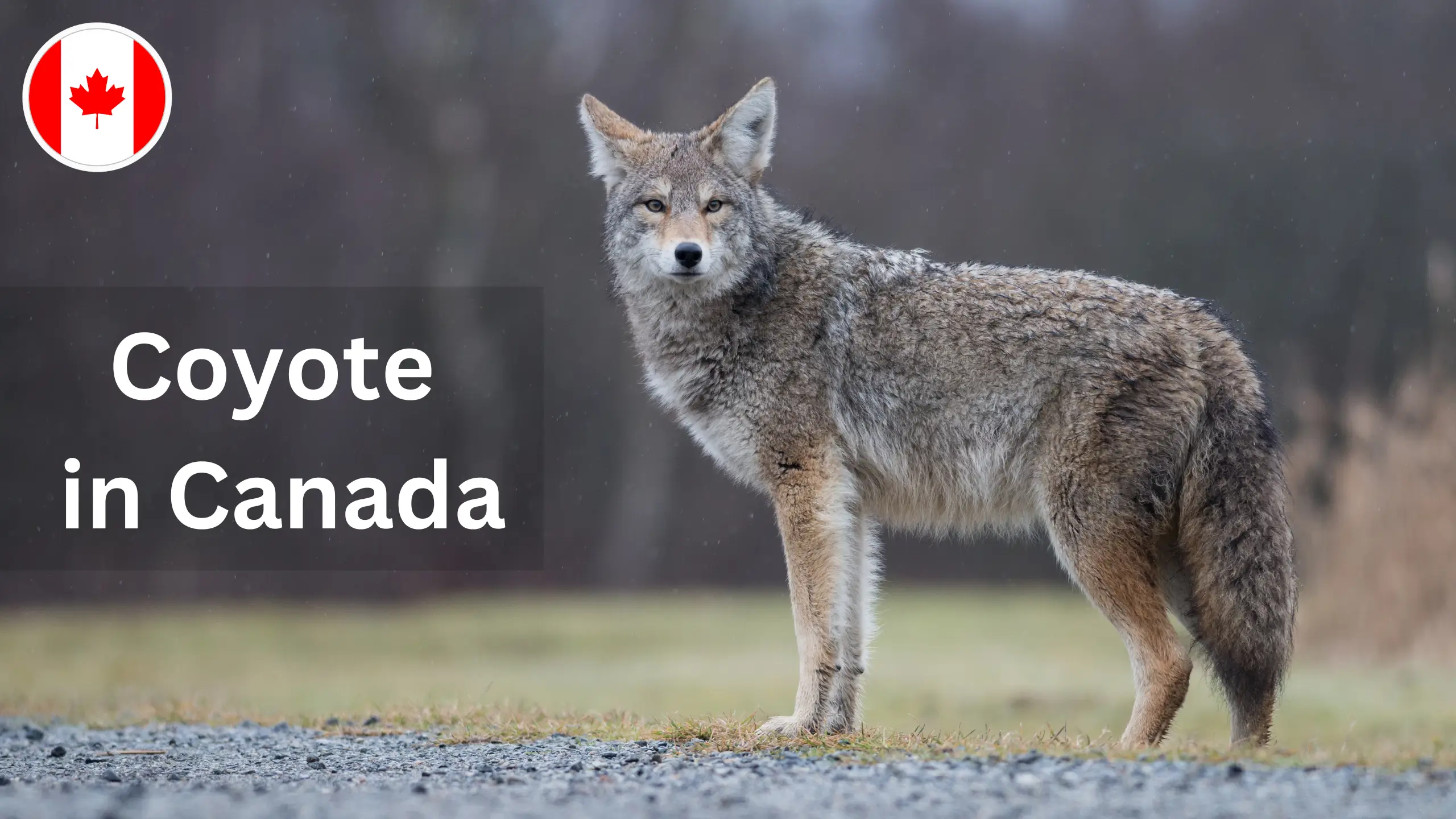These animals are medium-sized members of the dog family. They are omnivores and eat a variety of foods, including small mammals, birds, fruits, and garbage, making them very adaptable to different environments. Coyotes live in every province and territory across Canada.
Physical Characteristics and Features
The most predominant features of the coyotes are their appearance and the unique characteristics they have.
| Features | Relevant Information |
| Scientific Name | Canis latrans |
| Life Span | The average is about 10 – 11 years |
| Diet | Deer, Birds, Insects, Reptiles, Fishes Fruits, Rabbits and other rodents |
| Height | Around 2 feet tall |
| Average Weight |
The average is 9 – 23 kg Male weighs about 16 kg while females weigh about 13 kg |
| Other Names | Brush wolves, Prairie wolf |
| Habitat | Forests, Prairies, Deserts, Urban areas, and Arctic |
| Status of specie | Not Endangered |
Fascinating Facts About the Coyote in Canada
Here is a list of some attractive facts about the coyote in the Canadian territory:
-
Widespread Wanderers
They are found in every province and territory in Canada, from the Arctic tundra to the urban centers.
-
Canine Cousins
Coyotes are members of the dog family, Canidae, and are closely related to wolves and foxes.
-
Variations in Fur Color
Their fur color can range from grayish-brown to reddish-yellow, depending on the region and season.
-
Urban Adaptors
Coyotes are highly adaptable and can survive in a variety of habitats, including urban areas.
-
Night Hunters
They are most active at night, but can also be active during the day in areas with little human activity.
-
Family Affair
Coyotes are faithful and mate for life, with both parents playing a role in raising their pups.
-
Howling Harmony
Coyotes are known for their distinctive howling and yipping vocalizations, which they use for communication and territory marking.
-
Ecosystem Engineers
These wild animals help regulate the numbers of small animals and keep ecosystems healthy.
-
Keystone Species
They are considered keystone species, meaning their presence or absence can significantly impact the entire ecosystem.
-
Bold Beggars
They normally run away from humans, but they can become bold and aggressive if they become habituated to human food sources.
Sightseeing of Coyote in Canada
Coyote are widely distributed across the Canadian territory and can be seen at different locations in the country. Here is a list of some of those locations where these animals are abundant;
| Direction of the Country | Places Where Coyotes are Found |
| Western Side | Alberta and British Columbia |
| Eastern Side | Prince Edward Island, Quebec, Nova Scotia, New Brunswick |
| Central Territory | Ontario, Manitoba, and Saskatchewan |
| Northern Territory | Yukon, Northwest side, and Nunavut |
Individuals interested in seeing the coyote have an advantage in that they can be seen in different regions of Canada and across diverse habitats.
Best Time to See the Coyote in Canada
Best time to see the coyotes in Canada and capture them in your photographs;
| Season | Chances of Visibility |
| Winter | High because they search for food |
| Spring | High because they occupy territories |
| Fall | High because their hunting activities increase |
| Summer | Relatively low |








